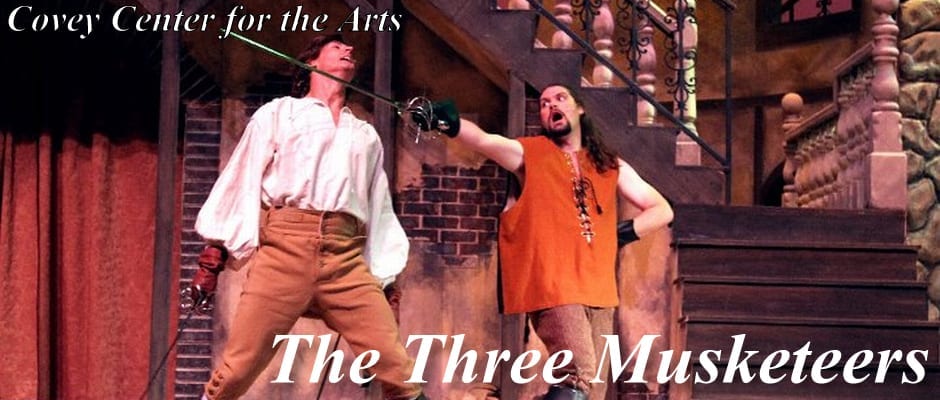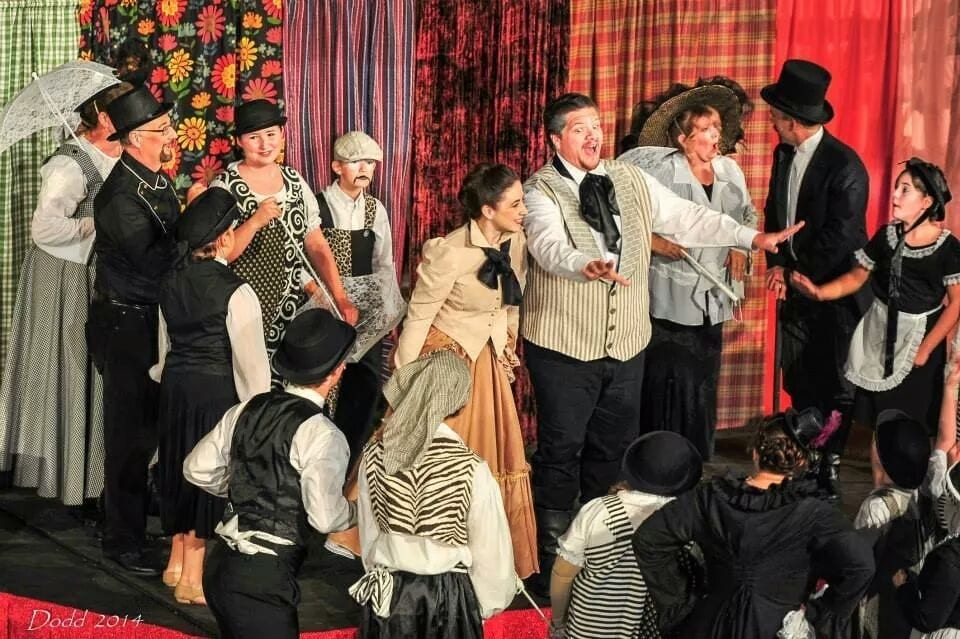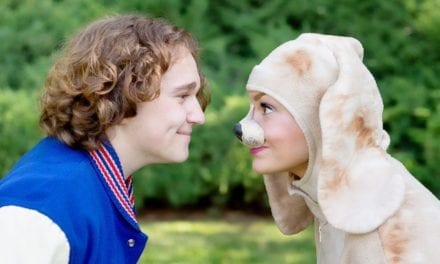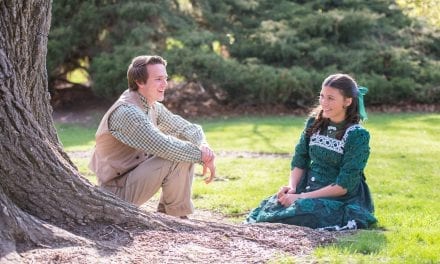PROVO — Despite their strong grounding in French history and culture, Alexandre Dumas’s writing is beloved throughout the world. Stories like The Count of Monte Cristo and The Man in the Iron Mask have been read and reread by millions. But Dumas’s most famous tale is probably that of The Three Musketeers. Like many of Dumas’s works, The Three Musketeers has been adapted the stage, and a production with a script written by Ken Ludwig is playing at the Covey Center for the Arts this month.
Written in 1844, The Three Musketeers tells the story of D’Artagnan (Joshua Cooper), a young provincial man who wishes to follow in his father’s footsteps and become a musketeer, which are the group of men who serve as the king’s personal guard. Before even reaching Paris, D’Artagnan is inadvertently thrust into the cloak and dagger intrigue that surrounds the weak rule of King Louis XIII (M. Cameron Bench). D’Artagnan also falls in love with Constance Bonacieux (Anna Daines), who serves as a go-between and a courier for Queen Anne (Crystal Roberts) and her lover the Duke of Buckingham (Travis Hyer). However, Louis XIII’s—and the Musketeers’—greatest threat is from Cardinal Richelieu (David Hanson), who actively conspires to usurp the king’s power and has a small army of henchmen to help him out.
The tale is one of swashbuckling adventure and high romance and it’s easy to see why the story has captivated the imaginations of people for over a century. Ludwig’s adaptation emphasizes D’Artagnan’s youth and inexperience—especially in the first half—which serves to heighten the danger he encounters in the unfamiliar world of political intrigue. D’Artagnan is a man with high ideals (such as desiring to continue the family history of serving the king and honoring his name) but also common, ordinary concerns (such as falling in love or not wanting to look after his younger sister Sabine). Cooper’s D’Artagnan is a litttle naive and innocent, which makes him quite endearing to me. I was also impressed by Cooper’s athleticism as he handled the many swordfights he was part of. Thanks to the script and Cooper’s performance, I found it very easy to relate to D’Artagnan and I found it hard to imagine a better D’Artagnan strutting around the stage of the Covey Center than Joshua Cooper.
Unfortunately, the other cast members’ acting was constrained by the script. Although D’Artagnan appears as a fully developed characer, none of the others do. All the actions of the other characters seem to have the sole purpose of propelling the story. I can’t say I blame Ludwig for this; most English translations of the original novel are about 600 pages long and he only has one evening to tell the story. But this sacrifices character development of the supporting characters, which is disappointing. For example, David Hanson’s portrayal of Cardinal Richelieu is suitable as he carefully plots and plans for power as the antagonist. However, this is all he does on stage and the audience isn’t given any clue to the reasoning behind his desires besides the general idea that he wants power and isn’t a nice man. This left Hanson with minimal options for his character choices and served as a barrier to giving Richelieu any real depth. I could say similar things about all the other supporting characters.
Because of the script structure, I have little to say about the acting of most of the cast. They played their archetypes as best as they could, and I applaud them for doing so well with what little most of them have to work with. To me, though, the most impressive treatment of a shallow character of the evening came from Jessica Myer‘s portrayal of Milady. Within less than a minute of her first entrance, you knew that she was a cool, calculating antagonist and that she would be a major force for D’Artagnan to reckon with during the course of the play. The expectations that Myer established in her scene were completely fulfilled as the evening unfolded.
The centerpiece of the evening, though, is the action. The audience is treated to a swordfight in the opening scene of the play and it seems like the play is full of adrenaline and excitement as the story moves from one action scene to another. Fight choreographer Jakob Lau Smith Tice has given the evening some exciting moments almost every actor in the cast gets at least one sword fight, and the audience sees everything from high minded dueling to dirty fighting. The only drawback from the fights is the fact that many of them are too slow. That is, the actors are moving through the actions at half the speed that they should at times. This, of course, gives the fights a rehearsed feel, especially as character anticipate their opponent’s move too early and block or dodge sword thrusts before they occur. I would suggest that this cast take an additional day or two to rehearse all their swordfights so that they can perform all of them at full speed without endangering themselves.
All the swordfights of the evening would be pointless without the careful hand of a director to help the audience understand why characters are fighting and what they’re fighting about. Fortunately, The Three Musketeers has a skillful director in Barta Heiner. Heiner makes this fantastical story real and relateable by focusing attention on the relationships among characters. She does this most effectively by adding little bits of stage business or character actions that seem to erupt from events that happened before the play started (such as the brother-sister relationship of D’Artagnan and Sabine, or the superior-subordinate relationship of Richelieu and Rochefort). This doesn’t make up for the lack of characterization in the script, but it does make the story more interesting and more believable. I also enjoyed how Heiner handled the scene where D’Artagnan meets each of the musketeers and also Constance. A lesser director would have staged the scene in such a way that it would appear cheesy and contrived. But with Heiner at the helm of this production, it came off as charming and compelling.
As far as visual aspects of the production are concerned, The Three Musketeers is wonderful. The massive set (Annie Lyman) is beautifully designed and effectively serves the needs of the script as it morphs into a palace, an inn, a convent, and the many other places where the action takes place. The costumes (designed by Agnes Broberg) were sumptuous and period specific. I’m especially impressed by Broberg’s work because 17th century France is not an easy time period to costume and I never thought that any of the characters were dressed inappropriately for their time, location, and social standing.
Overall, The Three Musketeers is a wonderful evening of high adventure. I commend the actors, cast, and director for an engaging evening of entertainment. This is a wonderful show that you will thrill and enthrall the entire family. At $6 per ticket for an excellent two and a half hour show, The Three Musketeers is probably the best entertainment bargain in Northern Utah this month.








